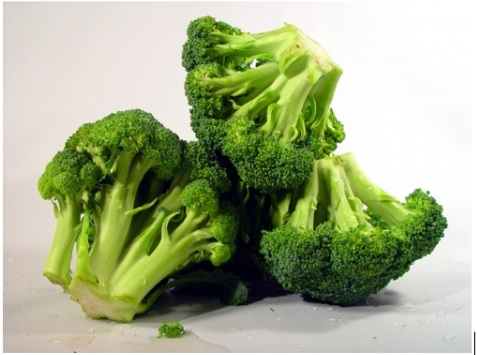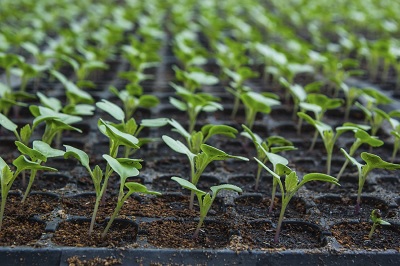
Broccoli farming is a great option for the rural economy. It can grow in the spring season and It is a cool season crop. It is a source of nutrition like vitamins, calcium and iron. The broccoli crop contains 3.3% of high content of Vitamin A and C and protein content. It also provides a substantial amount of niacin, riboflavin, and thiamine and also contains high concentration of carotenoids. You can mainly use it for salad purposes and can be eaten by lightly steaming it. It is almost marketed frozen, fresh or as a salad.
Process of Broccoli Cultivation in India
Broccoli grows best in a sunny position with some shade. A location that receives 5-7 hours of direct sunshine is ideal. Plant your broccoli seeds in healthy, wet, and well-draining soil. Before planting your seeds, apply a thin coating of manure or 2-4 inches of manure to help your plant thrive.
Before knowing the cultivation procedure, farmers should know the essential factor in farming, such as which equipment is most usable in this cultivation. The tractor is the essential segment in farming. And the farmers usually use the Kubota tractor in broccoli cultivation in India. Here we are describing the broccoli cultivation process.
Broccoli Cultivation – Land Preparation
Farmers can grow broccoli vegetables in a wide variety of soil. However, sandy and silt loam soils are preferable for getting a better yield from the broccoli crop. You should keep the pH of soil between 5.5 pH – 6.5 pH.
The land is plough 3 to 4 times before planting broccoli vegetables. Then add on it well rotten or compost FYM 25-30 tonnes/ hectare and mix it thoroughly when selecting the location.

Preparation Of Seedlings
Due to the less demand for broccoli seedlings, farmers prefer their fields rather than nurseries. Therefore you can easily get broccoli seeds and can prepare your plant seedlings.
Mainly two methods are available for creating broccoli plant seedlings:-
- Soilless media – with the help of coco peat in the plastic nursery tray
- Soil media – raised soil bed
Soil Media Procedure with Broccoli Plant Seedlings
- Prepare 3 meters long, 1 meter wide and 30 cm wide soil bed. Mix the roughly 10 kg farmyard manure or compost into the soil in each bed.
- Similarly, add the 100 gm of Bavistin powder and 50-gram Foret each spring and mix them in the soil.
- Then make a 2 cm deep line’s width on the bed and sow broccoli vegetable seed. After that, cover the seeds with well compost material.
- Broccoli vegetables require light water with the help of a sprinkler.
- For one hectare cultivating broccoli, seeds of hybrids require about 312 grams.
- After 5-6 days, start the seed germination, then do the seedling and ready for transplanting within 35 days.
- The broccoli plant must have 4-5 leaves at this time of transplantation.
- Sow the seeds in the second week of September; it’s the ideal time for broccoli plants.
- Farmers should maintain temperatures from 20 ℃ to 22 ℃ during plant growth. The ideal night and day temperature is 20 ℃ to 23℃ for good growth for the seedlings.
- When giving water to the nursery then also give the quantity potassium nitrate and calcium nitrate.
Broccoli Plants Transplantation
- Farmers can grow the broccoli plant on the raised bed in the row. You should maintain the distance between plant to plant is 30 – 45 cm and raw to raw is 30 cm.
- For the one-hectare area, you require approximately 66660 plants. Generally, plantings are done in the afternoon.
- Before planting seedlings, the seedlings should be immersed in 10 litres of water with a solution of 12 ml of fungicide
- When your broccoli and cauliflower seedlings have at least two pairs of true leaves, transplant them.
- It’s best to do this around 2 weeks before the last frost.
- Plant them in full sun in a rich, wet, well-drained soil, with young plants spaced 18 to 24 inches apart in rows of 2 to 3 feet..
Fertilizer Management for Broccoli Farming
You should analyze the soil and decide the fertilizer dose quantity before giving the fertilizer to the broccoli crop. Broccoli plants are heavy feeders and will benefit from a fertiliser application every few weeks.
Per hectare, the broccoli crop must provide 150 kilogrammes of nitrogen, 100 kg of phosphorus, and 170 kg of potassium. At the time of transplantation, 120 kg of nitrogen, 80 kg of phosphorus, and 60 kg of potash should be administered. At the time of transplantation, farmers should require Nitrogen 120 kg, 80 kg phosphorus and 60 kg potash. They should use the remaining half of Nitrogen in two split doses at 30 to 45 days after transplanting.
According to the crop requirement, they give micro nutrients. Broccoli plants show boron deficiency. So we observe it when applying boron then add water fertilizer or foliar spray in the field.
Pest
1) Cutworms:
The size of the caterpillar’s larva is about 3 to 4 cm long; They are grey or brown. The larvae can bite several plants in a single night. They hide during the daytime and feed at night.
Control:
- Use pheromone traps to control caterpillar production.
- Pair a row of a mustard crop after every 25 rows of broccoli crop.
- If cutworm is seen in large quantities in broccoli fields, spray insecticides like Rogoror and Endosulfan in 2-3 ml/Ltr of water.
2) Aphids:
Aphids are small, soft-bodied, pear-shaped insects. They feed on plants affecting quality and production.
Control:-
A mustard crop can work as a trap crop for aphids. To control aphid insects, spray Neems oil at 4% or also Oxydemeton methyl @ 0.02%.
Harvesting and Production
The crop is ready to harvest after 80 to 90 days of transplanting. When its heads become 3 to 6 inches, harvest the broccoli with a sharp knife. Farmers must harvest the crop before small flowers open on the broccoli crop heads. It can grow in the spring season and It is a cool season crop. It is a source of nutrition like vitamins, calcium and iron.
The yield depends on the variety; on average, the yield varies from 19-24 tonnes/hectare. According to market demand, broccoli is packed in a corrugated box or plastic crates.
Broccoli cultivation operations require trustworthy equipment for every Indian farmer; Hence, we recommend the Solis tractor, which is frequently used in farming.
For more knowledge about broccoli farming in India, stay tuned with us.





